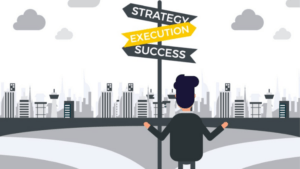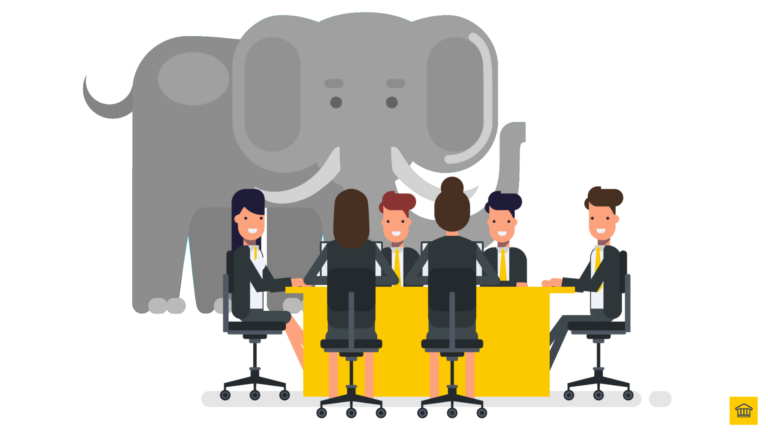Data is more valuable than oil.
Data is more valuable than oil.
Heath Gascoigne Tweet
You need data to determine your profits, sales numbers and conversion rates.
Unfortunately, like oil – raw data is not enough.
Data needs to be processed, extracted, broken down and interrogated so you can gain insights to understand your customer needs, and to develop a product or service that meets those needs..
That said, In this post we are going to cover the following:
- Design Thinking (aka User Centered Design (UCD)) and what that means?
- How to apply Design Thinking in your business transformation?
- Common mistakes to avoid
Defining Design Thinking
Design Thinking is the widely used term for what was previously referred to or known as User-centered design (UCD) or User-driven Development (UDD), which is a framework of processes which focus on usability goals, tasks and workflow, user characteristics, environment and various stages of the design process.
It requires designers to visualize how customers would use a product or service and to test these assumptions through real-life testing and experimentation.
Tests about the requirements, pre-production and post-production may be administered with or without the target Users. This process is necessary so that designers can understand how Users would experience their designs, as well as the usefulness and usability of their products.
History of UCD
The term User-Centered Design can trace its origins back to the book of Donald A Norman, titled, User-Centered System Design: New Perspectives on Human-Computer Interaction which was published in 1986.
The book highlights the importance of design and defines ‘good’ and ‘bad’ design through examples. Norman also discussed the principles of well-designed products which include the following:
- Simplifying task structure so that actions are intuitive
- Making the conceptual model of the system, actions, results and feedback visible
- Identifying the best relationship between intended results and required actions.
- Embracing and exploiting the limitations of systems
How to use Design Thinking?
Design Thinking is super hot right now.
Everyone’s talking about them, but how do you use it?
Design Thinking is typically used by software engineers to create products that fulfill their intended goals, and more recently by Business Architects and Designers to develop Target Operating Models (TOM) that address the users needs, but also align the Business Architecture to the business strategy.
The needs of the Users are identified from the beginning and are refined via investigative methods such as user journey mapping, prototype testing, usability testing among many others.
Design Thinking’’s goal is to create a product with high usability, effectiveness and manageability that meet the user’s requirements. To achieve this, it aims to address the following questions:
- Who are the Users?
- What are the Users’ tasks and goals?
- What are the Users’ experience levels with the product, or similar products?
- What features do the Users need from the product?
- What information would the Users need, and in what form do they need it?
- How do Users think the product should work?
- What are the extreme environments?
- Is the User multitasking?
- Does the interface utilize different inputs modes such as touching, spoken, gestures, or orientation?
How to apply Design Thinking in your business transformation?
Business Transformation and Business Architecture puts the customer at the centre of everything that’s done.
The Business Architecture building block and blueprints where the Design Thinking (aka User Centered Design) takes place is the User Journey Mapping building block and User Journey Map blueprints.
The User Journey Mapping Building Block describes the interactions between the user and the organisation. It provides the scope of the programme and problem statement in the context of the customer and their interaction with the organisation.
The User Journey Map Blueprint shows the interaction between the customer and the organisation.
The purpose of User Journeys is to:
- Show and understand the key business functions that are involved during the user’s interaction with the organisation, in terms of:
- Process – what happens to the customer during their interaction with the organisation
- Goals – what the customer intends to gain at each stage of the process.
- Experience – how the customer feels (i.e. concerns, issues) about what happens to them during the interaction.
- Improvement Opportunities – changes to the organisation that could improve the customer experience.
- Visualise the interaction between the User and the different building blocks and blueprints of the Business Architecture (e.g. capabilities). This helps show where and how these concerns and issues are addressed.
Here’s an example of a User Journey Map blueprint:*

Benefits of User Journeys and User Journey Mapping
The benefits of User Journeys and User Journey Mapping is that they:
- Provide a single cross-business view of the customer’s interaction and experience with all the organisation’s functions;
- Help define key enabling requirements (i.e. people, process, technology, etc.)
- Highlight areas of importance, areas of concern and improvement opportunities to maintain or improve the user’s experience.
Common mistakes to avoid with Design Thinking
The risks and mitigations of Design Thinking when using User Journey Mapping is that User Journeys aren’t given the credit or credibility that they deserve. Instead, they’re mistaken as process maps or value maps.
User Journeys and User Journey Mapping are different from process maps or value maps.
User Journeys are designed to describe how the user ‘feels’ about their experience with the organisation. In contrast, process maps and value maps describe ‘what happens’ to a User throughout their journey with the product or business.
Creating User Journeys and User Journey Mapping is an efficient and cost effective process for the organisation.
Ultimately, if using the product is not rewarding or beneficial for the customer, they wont use it or worst, they won’t continue to conduct business with the organisation.
If using the product is not rewarding or beneficial for the customer, they wont use it or worst, they won’t continue to conduct business with the organisation.
Heath Gascoigne Tweet
As a result, any improvements gained in the creation of a Target Operating Model (TOM) are nullified.
User Journeys are a key tool in putting the User issues and concerns in the forefront, especially during the planning and development of the TOM (Target Operating Model).
It provides the visual context of the users’ experience and interaction with the organisation. It also highlights ‘what’ the customer feels and ‘where’ the users’ interaction with the organisation occurs.
By knowing ‘what’ the experience feels like and ‘where’ Users will experience it, the organisation is able to address the Users’ frustrations in the development of the TOM.
Thank you for reading this!
Sincerely,
Heath Gascoigne
P.S. If you want to join our Business Transformator community of like-minded Business Transformators, join the community on the Business Transformator Facebook Group here.
P.P.S. If you want to learn more about business transformation, check out The Business Transformation Playbook here.
For more information, visit https://hoba.tech











